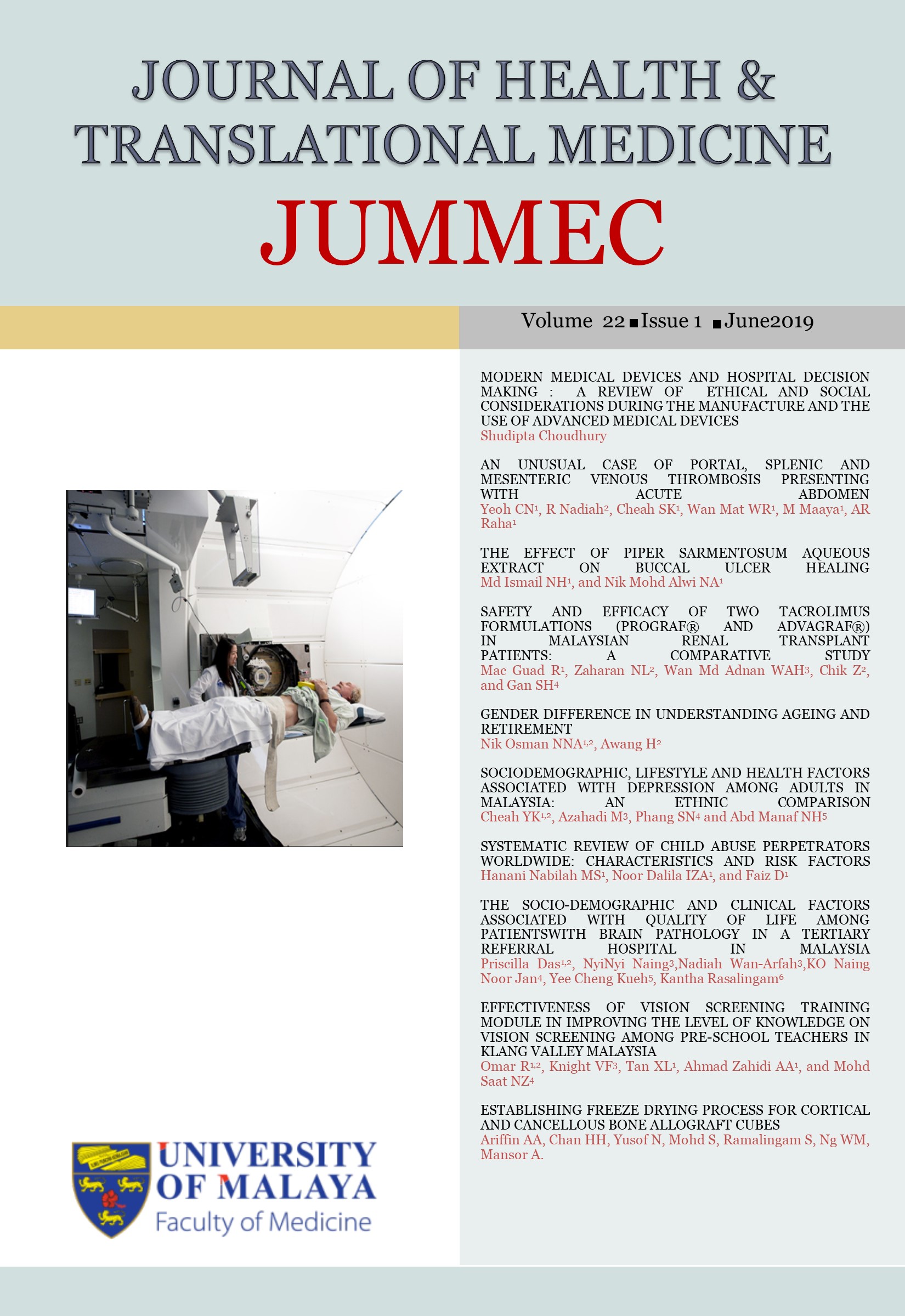SAFETY AND EFFICACY OF TWO TACROLIMUS FORMULATIONS (PROGRAF® AND ADVAGRAF®) IN MALAYSIAN RENAL TRANSPLANT PATIENTS: A COMPARATIVE STUDY
Received 2019-05-06; Accepted 2019-05-29; Published 2019-06-29
DOI:
https://doi.org/10.22452/jummec.vol22no1.4Keywords:
Prograf®, Renal Transplant, Advagraf®, Acute Rejection, SafetyAbstract
Aim: A once-daily formulation of tacrolimus, Advagraf®, is increasingly being used in place of twice-daily tacrolimus, Prograf®, as a standard immunosuppressive agent for transplant patients. In this study, the clinical safety and efficacy of Advagraf® were compared with Prograf®, among multi-ethnic Malaysian renal transplanted population. Method: This retrospective study identified renal transplant patients who were converted from Prograf® to Advagraf® at the University Malaya Medical Centre (UMMC) (n=69). Clinical notes and laboratory records, including tacrolimus daily dose and trough levels, were obtained for one-year, pre-and post-conversion. Causality assessment of suspected adverse events were based on the WHO-Uppsala Monitoring Center criteria. Renal biopsy records were re-evaluated based on the updated Banff 2007 classification for biopsy-confirmed acute rejection (BPAR). Results: Following conversion to Advagraf®, the mean tacrolimus trough level and daily dose decreased significantly (p<0.01) from 6.11±2.15 to 4.91±1.25 ng/mL and 4.08±2.19 to 3.48±1.79 mg/day, respectively. There was no significant difference in serum creatinine and estimated glomerular function. HDL was significantly increased (p=0.005) while triglycerides was significantly decreased following conversion to Advagraf® (p=0.003). The incidence of BPAR was 16% (4 cases in Prograf® and 7 cases in Advagraf®). No patients died or lost their grafts during the study period. There were 34 cases of adverse events which were classified as certain (5%), probable (36%), possible (23%) and unlikely (36%) with no significant difference between groups. Conclusion: Prograf® and Advagraf® tacrolimus formulations have comparable safety and efficacy profiles among Malaysian renal transplant patients. Advagraf® may have an advantage in terms of lipid profile.
Keywords: Prograf®, Renal Transplant, Advagraf®, Acute Rejection, Safety
Downloads
Downloads
Published
Issue
Section
License
All authors agree that the article, if editorially accepted for publication, shall be licensed under the Creative Commons Attribution License 4.0 to allow others to freely access, copy and use research provided the author is correctly attributed, unless otherwise stated. All articles are available online without charge or other barriers to access. However, anyone wishing to reproduce large quantities of an article (250+) should inform the publisher. Any opinion expressed in the articles are those of the authors and do not reflect that of the University of Malaya, 50603 Kuala Lumpur, Malaysia.


